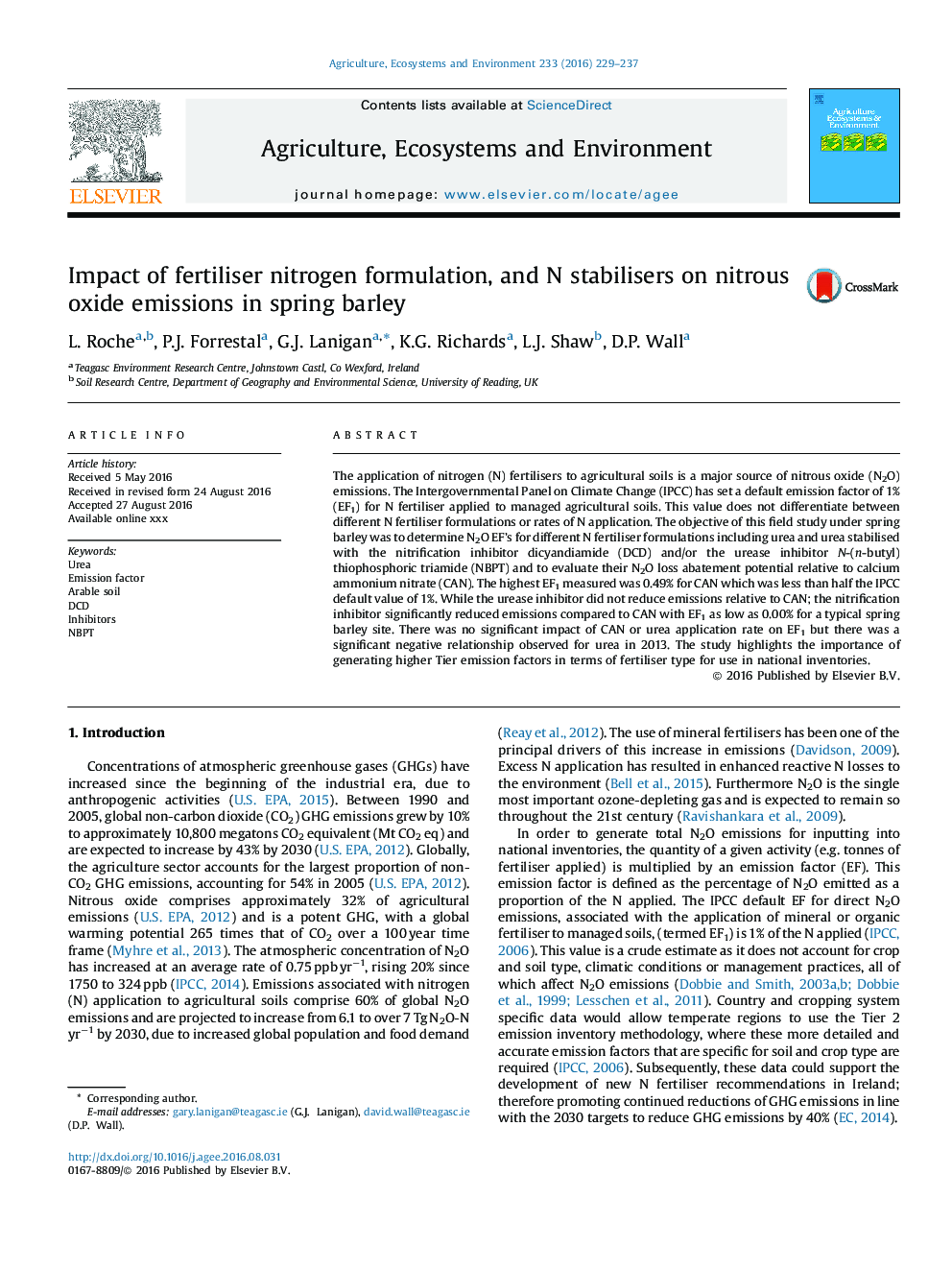| Article ID | Journal | Published Year | Pages | File Type |
|---|---|---|---|---|
| 8487276 | Agriculture, Ecosystems & Environment | 2016 | 9 Pages |
Abstract
The application of nitrogen (N) fertilisers to agricultural soils is a major source of nitrous oxide (N2O) emissions. The Intergovernmental Panel on Climate Change (IPCC) has set a default emission factor of 1% (EF1) for N fertiliser applied to managed agricultural soils. This value does not differentiate between different N fertiliser formulations or rates of N application. The objective of this field study under spring barley was to determine N2O EF's for different N fertiliser formulations including urea and urea stabilised with the nitrification inhibitor dicyandiamide (DCD) and/or the urease inhibitor N-(n-butyl) thiophosphoric triamide (NBPT) and to evaluate their N2O loss abatement potential relative to calcium ammonium nitrate (CAN). The highest EF1 measured was 0.49% for CAN which was less than half the IPCC default value of 1%. While the urease inhibitor did not reduce emissions relative to CAN; the nitrification inhibitor significantly reduced emissions compared to CAN with EF1 as low as 0.00% for a typical spring barley site. There was no significant impact of CAN or urea application rate on EF1 but there was a significant negative relationship observed for urea in 2013. The study highlights the importance of generating higher Tier emission factors in terms of fertiliser type for use in national inventories.
Related Topics
Life Sciences
Agricultural and Biological Sciences
Agronomy and Crop Science
Authors
L. Roche, P.J. Forrestal, G.J. Lanigan, K.G. Richards, L.J. Shaw, D.P. Wall,
